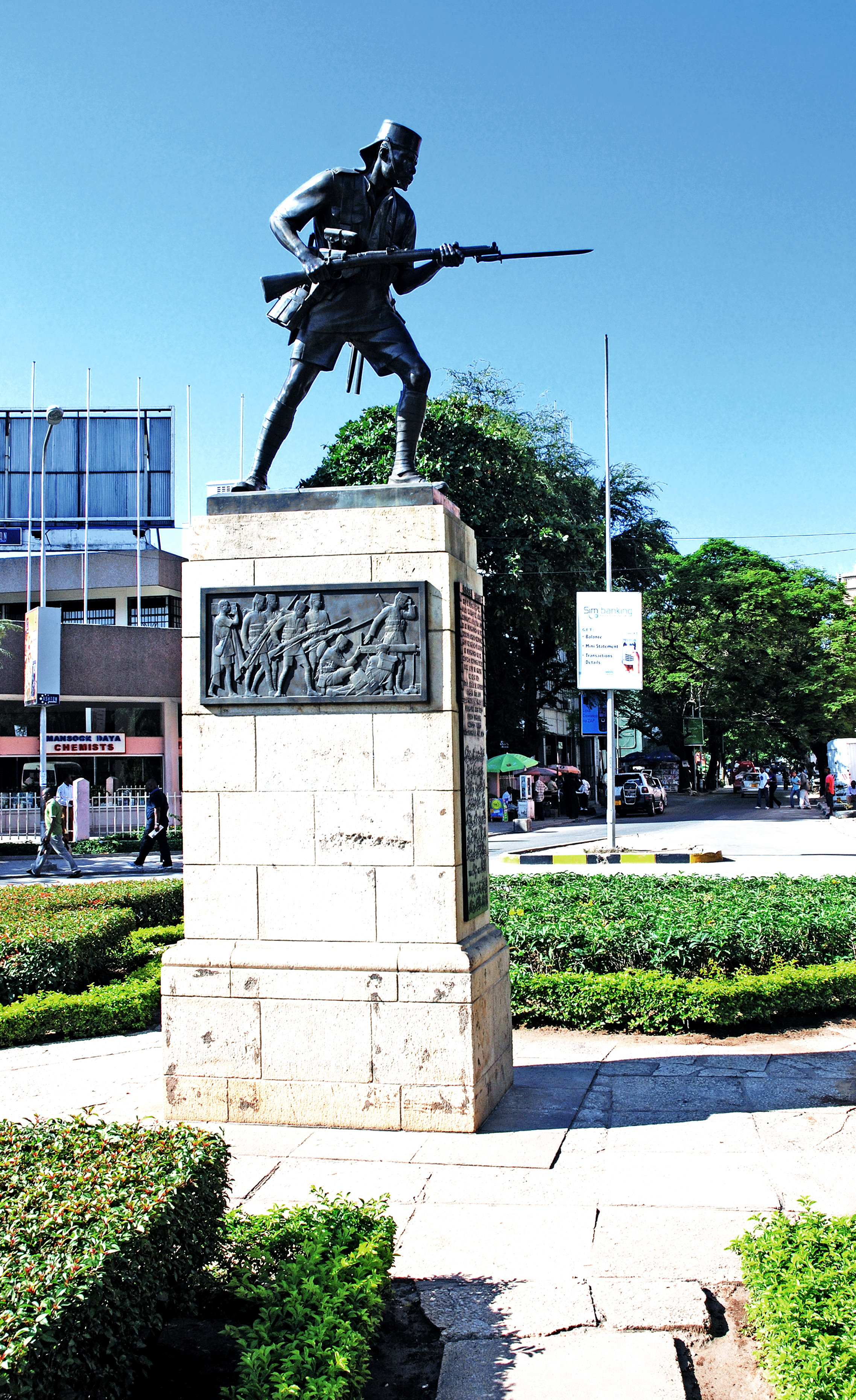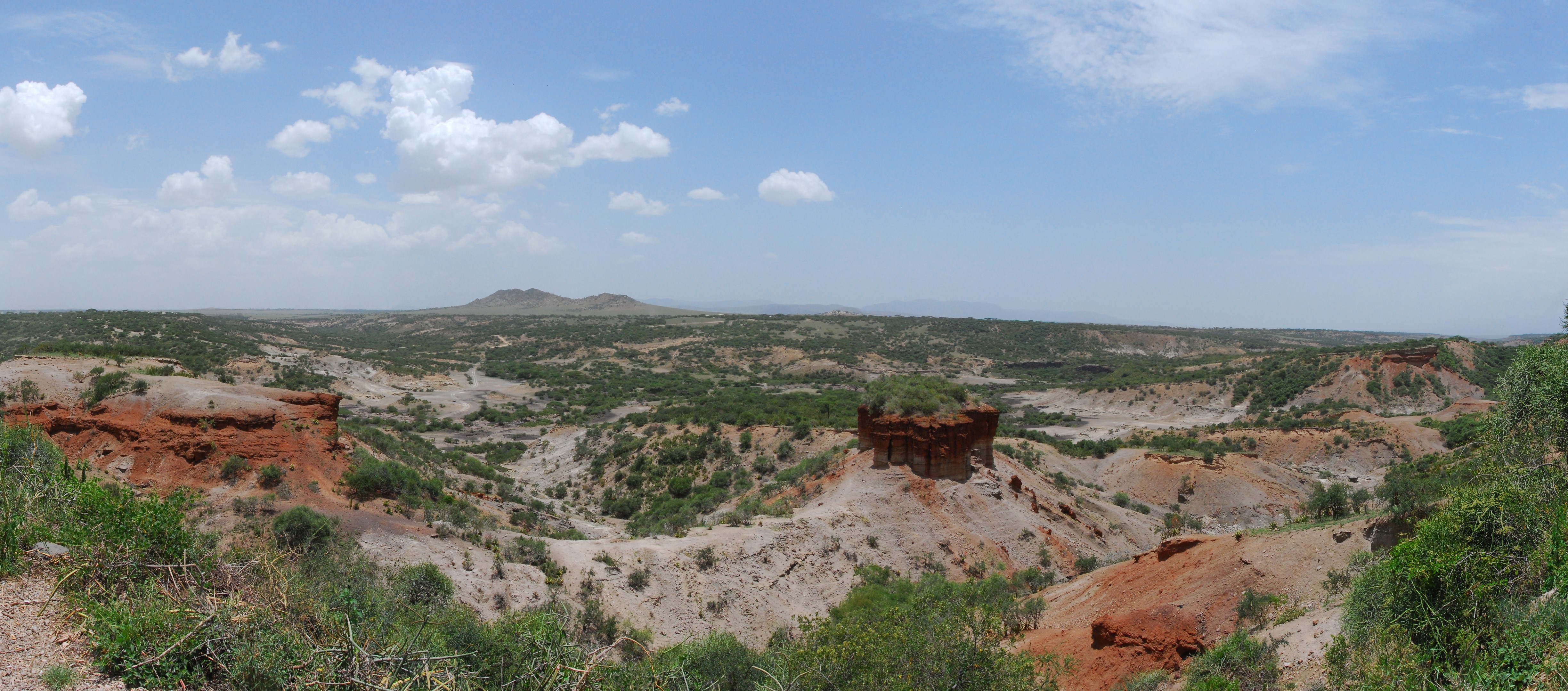|
Carrier Corps
The Carrier Corps was a labour corps created in Kenya during the First World War to provide military labour to support the British campaign against the German Army in East Africa. Service Whereas the Germans, commanded by Paul von Lettow-Vorbeck, armed and trained African askaris to create an effective guerrilla force able to live off the land; the British attempted to deploy Indian Army troops under Jan Smuts and keep the King's African Rifles as internal security troops, with limited success. Not only were the Indian Army unused to the terrain, the need to feed a large body of foreign soldiers presented severe logistical problems, as troops in the interior had to be supplied over long distances without rail or road lines of communication. To deliver one kilogram of rice to the interior it could take 50 kilograms of rice at the coast—most of it being consumed en route to feed all the porters needed to carry it inland. The British Administration formed a military labour orga ... [...More Info...] [...Related Items...] OR: [Wikipedia] [Google] [Baidu] |
Askari Monument, Nairobi, Kenya
An askari or ascari (from Somali language, Somali, Swahili language, Swahili, and Arabic language, Arabic , , meaning 'soldier' or 'military', also 'police' in Somali) was a local soldier serving in the armies of the European Colonialism, colonial powers in Africa, particularly in the African Great Lakes, Northeast Africa and Central Africa. The word is used in this sense in English language, English, as well as in German language, German, Italian language, Italian, Urdu, and Portuguese language, Portuguese. In French, the word is used only in reference to native troops outside the French colonial empire. The designation is still in occasional use today to informally describe police, gendarmerie and security guards. During the period of the European colonial empires in Africa, locally recruited soldiers designated as askaris were employed by the Italian, British, Portuguese, German and Belgian colonial armies. They played a crucial role in the conquest of the various colonial pos ... [...More Info...] [...Related Items...] OR: [Wikipedia] [Google] [Baidu] |
Jomo Kenyatta Avenue
Jomo Kenyatta Avenue is a major road in Mombasa, Kenya. The majority of the road is a six-lane dual carriageway, separated by a concrete reservation of approximately in width. The road travels southeast from Makupa Circus, and terminates at a junction with Digo Road.http://www.globalsecurity.org/military/facility/images/mombasa-map1.jpg Traffic on the road is restricted to . The crossroads with Ronald Ngala Road and Mwatate Street provides one of Mombasa's two sets of traffic lights Traffic lights, traffic signals, or stoplights – also known as robots in South Africa, Zambia, and Namibia – are signaling devices positioned at road intersections, pedestrian crossings, and other locations in order to control the flow o ... (the other being at the west end of the Nyali Bridge). References Streets in Mombasa Jomo Kenyatta {{Kenya-road-stub ... [...More Info...] [...Related Items...] OR: [Wikipedia] [Google] [Baidu] |
History Of Tanzania
The modern-day African Great Lakes state of Tanzania dates formally from 1964, when it was formed out of the union of the much larger mainland territory of Tanganyika and the coastal archipelago of Zanzibar. The former was a colony and part of German East Africa from the 1880s to 1919 when, under the League of Nations, it became a British mandate. It served as a British mir II, providing financial help, munitions, and soldiers. In 1947, Tanganyika became a United Nations trust territories, United Nations Trust Territory under British administration, a status it kept until its independence in 1961. The island of Zanzibar thrived as a trading hub, successively controlled by the Portuguese, the Sultanate of Oman, and then as a British protectorate by the end of the nineteenth century. Julius Nyerere, independence leader and "baba wa taifa" (''father of the nation'') for Tanganyika, ruled the country for decades, while Abeid Amaan Karume, governed Zanzibar as its president and Vi ... [...More Info...] [...Related Items...] OR: [Wikipedia] [Google] [Baidu] |
John Arthur (missionary)
John William Arthur (1881, Glasgow – 1952, Edinburgh) was a medical missionary and Church of Scotland minister who served in British East Africa (Kenya) from 1907 to 1937. He was known simply as ''Doctor Arthur'' to generations of Africans. Early life and education in Scotland John William Arthur was the son of John W. Arthur, a Glasgow businessman of firm evangelical Christian convictions. Arthur wanted to be a missionary from an early age. He was educated at Glasgow Academy and the University of Glasgow from which he graduated with a Bachelor of Medicine and Surgery in 1903. He graduated with the Doctor of Medicine degree in 1906. He was ordained (following a special short course in theology) as a minister of the Church of Scotland in 1915 and was married in 1921. Missionary work in East Africa Medical missionary Arthur was appointed to the post of medical missionary at the Kikuyu, Kenya, Kikuyu Mission, British East Africa (Kenya), in 1906, arriving at the mission on 1 ... [...More Info...] [...Related Items...] OR: [Wikipedia] [Google] [Baidu] |

